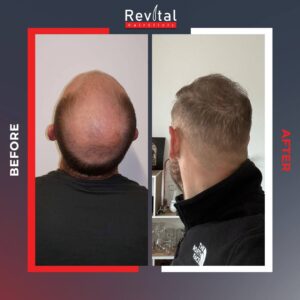How is the Hairline Determined?
One of the most important aspects of a hair transplant is the design and placement of the hairline. A well-designed hairline can make a significant difference in achieving a natural and aesthetically pleasing result. When considering a hair transplant, many patients are concerned about how the hairline will be determined and whether it will look natural and suit their facial features.
In this article, we’ll explore the factors that influence how the hairline is determined, the process involved, and the role of the surgeon in creating a hairline that complements the patient’s appearance.
Factors That Influence Hairline Design
The design of the hairline is a highly personalized aspect of the hair transplant process. Several factors come into play when determining the ideal hairline for a patient:
- Facial Features
The hairline is designed to complement the patient’s facial features. A natural-looking hairline should align with the proportions of the face and enhance the overall aesthetic. For example:
- For men, a slightly higher, more angular hairline may be appropriate, reflecting a mature, masculine appearance.
- For women, a more rounded, softer hairline is typically preferred, enhancing femininity and balance with the rest of the face.
The surgeon will carefully consider the patient’s facial structure, including the forehead size, cheekbones, and jawline, to create a hairline that looks harmonious with the rest of their features.
- Age and Hair Loss Pattern
As people age, their hairlines naturally recede, and hair loss patterns change. A skilled surgeon takes into account the patient’s current hair loss pattern and potential future hair loss when designing the hairline. For instance:
- Young patients may want a hairline that appears youthful and natural, avoiding an overly aggressive or low hairline.
- Older patients may require a hairline that looks age-appropriate while still providing a natural-looking result that blends with the rest of the scalp.
The surgeon will assess how much hair loss has occurred and whether the patient may experience further recession over time. This consideration helps create a long-term, natural look.
- Hair Characteristics
The texture, thickness, and color of the patient’s hair also play a key role in determining the hairline. For example:
- Thicker hair may allow for a more defined hairline with stronger, more visible edges.
- Finer hair may require a softer, more subtle hairline to ensure the transition between the natural and transplanted hair looks seamless.
Additionally, the surgeon will assess the natural direction of hair growth. The hairline will be designed so that the transplanted hair grows in the same direction as the patient’s natural hair, ensuring a uniform and natural appearance.
- Donor Area Quality
The donor area—typically located at the back or sides of the scalp—is where the hair follicles are harvested for transplantation. The density and quality of the hair in this area can impact the design of the hairline. A denser donor area allows for a fuller, more defined hairline, while a less dense donor area may result in a more conservative, natural approach to hairline design.
The surgeon will evaluate the donor area to determine the best approach for obtaining sufficient follicles to create a full and natural hairline.
- Patient Preferences
Every patient has their own preferences when it comes to the shape and height of their hairline. Some may prefer a lower hairline for a youthful, rejuvenated appearance, while others may want a higher hairline for a more mature look. The surgeon will work closely with the patient to understand their expectations and goals.
During the consultation, patients will have the opportunity to discuss their desired outcome and explore different hairline options. It’s important for patients to communicate their preferences clearly to ensure the final result aligns with their vision.
The Process of Designing the Hairline
Designing the hairline is a crucial step in the hair transplant process. Here’s a look at the steps involved in determining the ideal hairline for a patient:
- Consultation and Assessment
The process begins with a thorough consultation with the hair transplant surgeon. During this consultation, the surgeon will:
- Review the patient’s medical history.
- Examine the pattern and extent of the hair loss.
- Assess the donor area for follicle density and quality.
- Discuss the patient’s aesthetic goals and preferences.
The surgeon will also evaluate the facial features, age, and hair characteristics to propose a hairline design that will suit the patient’s overall appearance.
- Hairline Design with the Patient
Once the surgeon has gathered all necessary information, they will start designing the hairline. Using a special tool, the surgeon will draw the hairline on the patient’s scalp to visualize the ideal placement. This allows the patient to see the proposed design and provide feedback. The surgeon will make adjustments based on the patient’s feedback to ensure satisfaction with the design.
In some cases, the surgeon may use 3D imaging or other advanced technologies to simulate the final result. This can help patients get a clearer idea of how their new hairline will look after the transplant.
- Marking the Hairline for Transplantation
After finalizing the design, the surgeon will mark the hairline on the scalp using a precise, temporary marking tool. This ensures that the hair follicles will be implanted at the correct angles and positions during the transplant procedure.
- Surgical Execution
Once the hairline is designed and marked, the surgeon will begin the transplant procedure. Using the appropriate technique (FUE, DHI, Sapphire FUE, etc.), the surgeon will carefully extract and transplant the hair follicles into the designated area, following the natural growth pattern of the hairline.
⏳ How Long Does it Take to See the Final Hairline Results?
After the transplant, it may take 6 to 12 months for the transplanted hair to grow fully and for the final result to become visible. During this period, the transplanted hair may initially shed (a process known as shock loss), but new hair will begin to grow in its place.
The final hairline will continue to mature over the course of 12 to 18 months, at which point the full results of the transplant will be visible, with the hairline looking natural and integrated with the surrounding hair.
Tips for Maintaining a Natural Hairline
To maintain the natural appearance of the hairline after the transplant, consider the following tips:
- Follow Post-Operative Instructions: Proper care and following the surgeon’s post-op instructions are crucial for the health of the transplanted follicles and the overall success of the procedure.
- Avoid Excessive Tension on the Hairline: Avoid hairstyles or actions that may pull or tug at the hairline during the healing process. This can cause damage to the transplanted hair follicles.
- Be Patient: Hair growth can be slow after a transplant, and it may take time to see the full results. Give your hairline time to mature naturally.
- Regular Follow-Ups: Stay in touch with your surgeon for regular follow-up appointments to monitor your progress and ensure that the transplanted hairline is developing as expected.
In Conclusion
Determining the ideal hairline is a highly individualized process that requires careful consideration of several factors, including facial features, age, hair loss patterns, and patient preferences. A skilled surgeon will work with the patient to design a hairline that complements their appearance and achieves a natural, aesthetically pleasing result.
If you’re considering a hair transplant, be sure to consult with an experienced surgeon who understands how to design and place a natural-looking hairline. At Revital Hair Clinic, we take great care in ensuring that each patient receives a personalized, well-designed hairline that enhances their overall appearance.
For more information or to schedule a consultation, don’t hesitate to contact us. We’re here to help you achieve the hairline you’ve always wanted.
Revital Hair Clinic © 2024












Leave a Reply